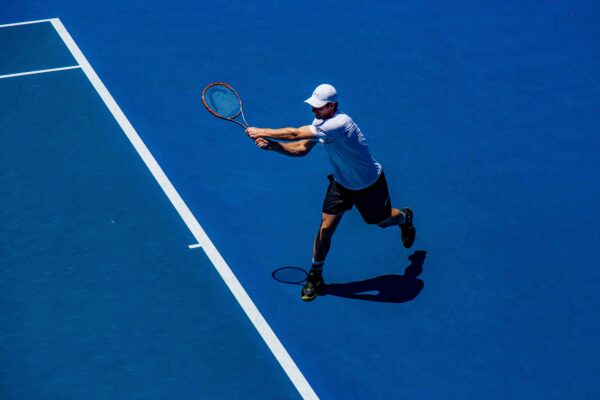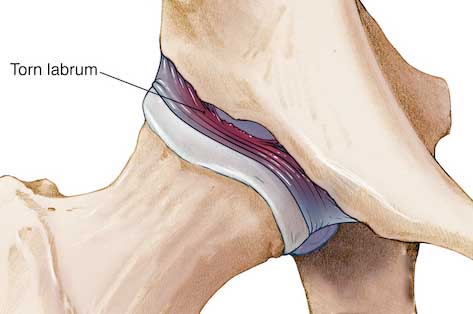What is the Labrum?
The Labrum is the fibrocartilage that surrounds the hip joint and provides it stability.
It also helps deepen the socket and protects the joint by decreasing the forces transmitted to the joint. A tear to this cartilage can cause pain in the front of the hip, in the groin or side of the hip. The pain usually worsens with walking, pivoting or impact activities such as running. The pain also occurs at night and can be associated with clicking, catching or locking.
Likely causes of Labral tears
Labral tears often occur in association with a traumatic event such as a car accident, a fall or in contact sports. It can also be damaged through overuse injuries due to repetitive twisting forces going through the hip joint and surrounding tissue. Any athlete that repetitively perform rotational motion at the hip such as football, hockey, golf and dance are at increased risk for injury.
Some underlying congenital structural abnormalities of the hip also increase the risk of an individual to have a labral tear

How do you diagnose a labral tear of the hip?
Labral tears often go undiagnosed as some of the symptoms are very similar to other conditions such as hip flexor tendonitis, hip bursitis and other soft tissue injuries around the hip. A specialist will ask all about the history of the injury and perform a thorough physical examination to help diagnose the problem.
Imaging with X-Ray will show any bony problems and an MRI scan with dye injected into the joint can be useful if the diagnosis is still in question. Sometimes even the MRI does not show the tear clearly and in these cases the doctors just have to rely on their judgement.
Do I have to have surgery for a labral tear of the hip?
Not all labral tears need surgery, sometimes a combination of rest (avoiding any activities that cause pain), anti-inflammatory medicines and a focused course of physiotherapy are the first choice for the treatment of a labral tear.
Often the pain, symptoms (popping, clicking, locking) and decreased mobility improve with this alone. The physiotherapy protocol is very specific to the individual and addresses all the biomechanical faults that placed the hip at risk for a labral tear in the first place. It is very important for the athlete to address these issues to avoid re-injury.
If this does not succeed, then surgery is considered. Depending on the type of labral tear it can be debrided (shaved down to healthy tissue) or repaired. Post-operative rehabilitation is essential to the success of the procedure with a graduated return to activity slowly starting with day to day activities and then progressing to higher impact activities such as running.
All pivoting and twisting must be avoided for a much longer period of time. A return to sports depends on the specific demands of that particular sport. Athletes that perform repetitive pivoting and rotation of the hip will need 6-12 months to return to full participation.
Regardless of if surgery is required or not, it is important to restore pain-free functioning of the hip to guard against re-injury and early wearing down of the joint (arthritis).

